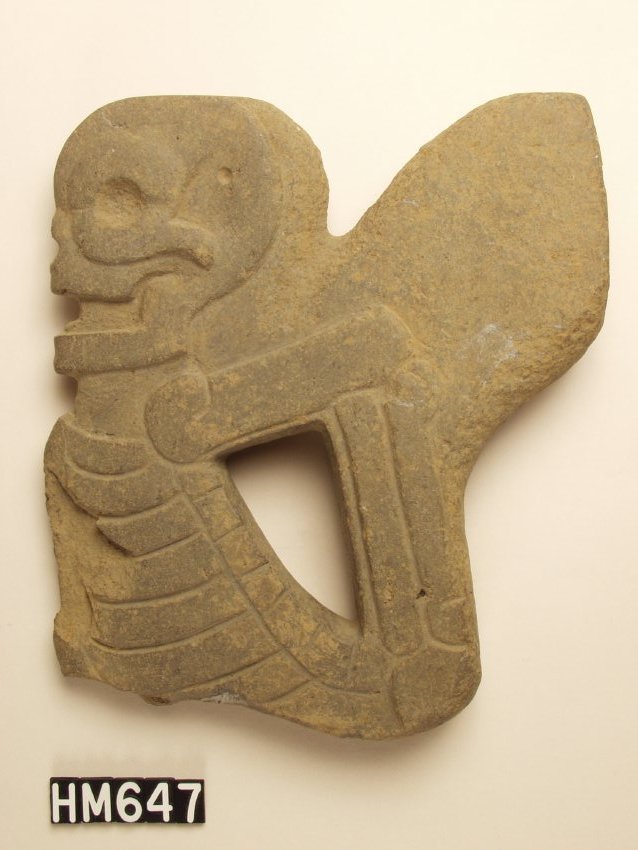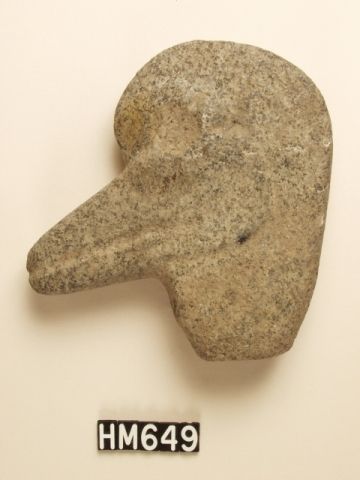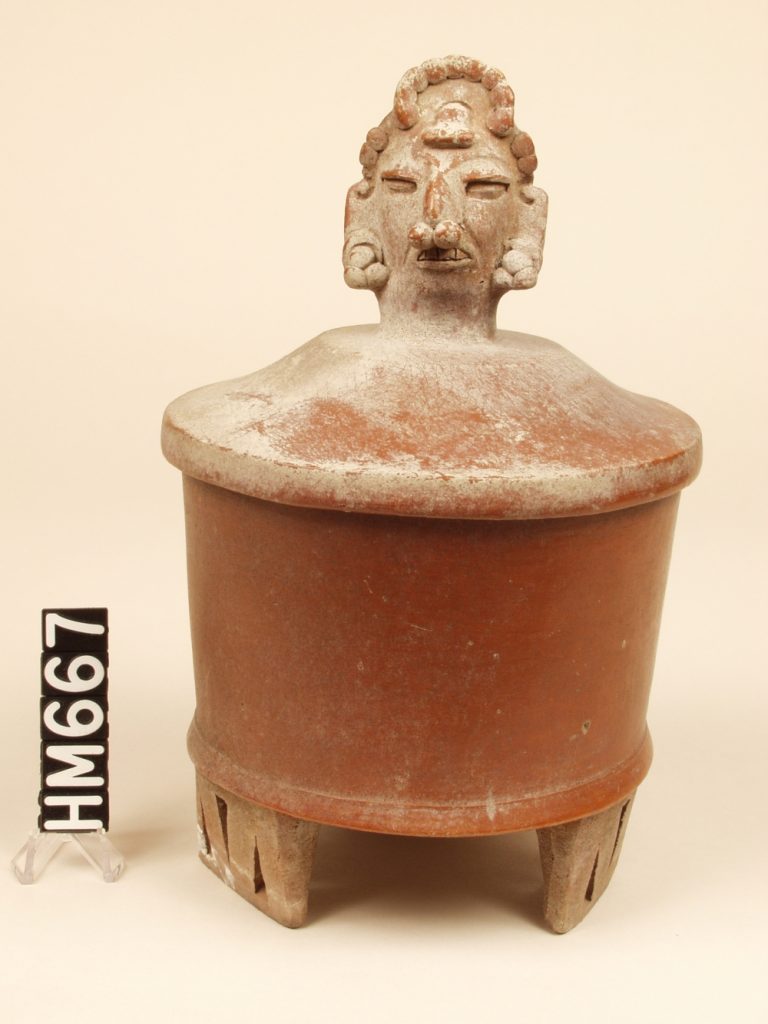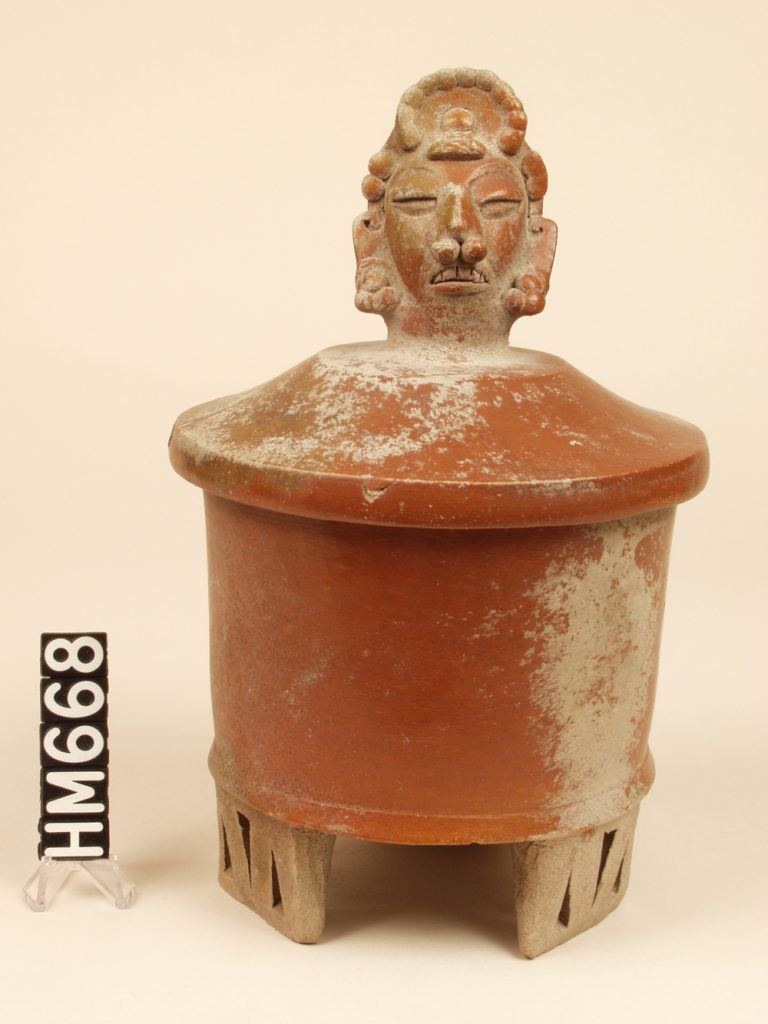Ballgame
The ancient Maya ballgame called pitz was part of Maya political, religious, and social life. Played with a rubber ball ranging in size from that of a softball to a soccer ball, players would attempt to bounce the ball without using their hands through stone hoops attached to the sides of the ball court. The ball court itself was a focal point of Maya cities and symbolized the city’s wealth and power. The playing arena was in the shape of an “I” with high platforms on either side of the court allowing for large numbers of spectators. Portable stone court markers known as hacha usually depicting animals or skulls were placed around the arena. Murals depicting captives, warriors, Creation myths, and transfers of political power from one ruler to another were painted around the ball court. The ballgame gave neighboring cities an alternative to war for settling disputes.
Ballplayers wore protective equipment during the game to prevent bodily damage by the hard rubber ball that sometimes weighed up to 20 lbs. To protect ribs and the torso players would wear a yoke of leather or wood around their waists. Stone hachas were sometimes attached to the front of the yoke after the game for ceremonial purposes. They also wore padding around knees and arms, and large stylized animal headdresses that may have represented what they believed to be their animal counterparts or way. Handstones known as manopla were held to hit the ball with extra force, and may have been used to start the ball in play.
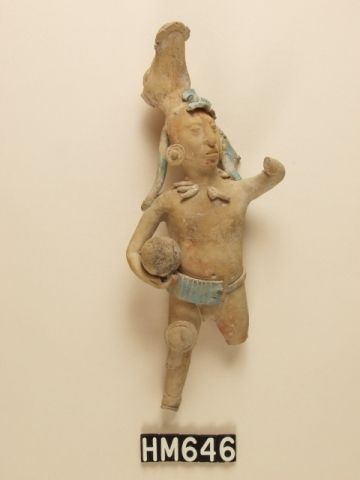
Maya Ceramic Figurine
AD 600 – 900
Jaina Island
This ballplayer wears a deer headdress, ear spools, a necklace, a loincloth, and a knee pad. Elements of the outfit have been picked out in a pigment known as Maya blue.
William P Palmer, III Collection
HM646
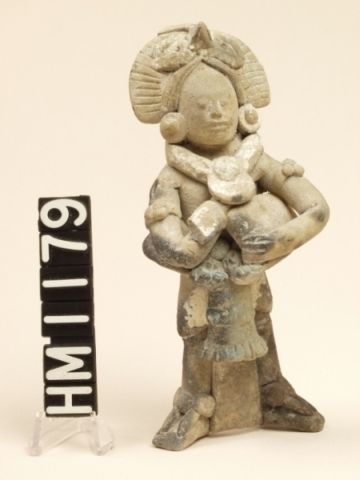
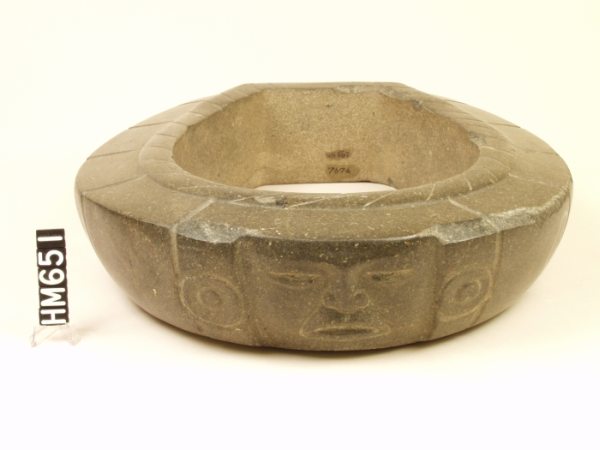
Totonac stone yoke
AD 1400 – 1519
This is a carved stone representation of the yoke – usually in leather or wood – worn by ballplayers.
William P Palmer, III Collection
HM651
The spiritual story most associated with the ballgame is that of the Maize Gods and the Hero Twins from the Quiché Maya book of creation, the Popol Vuh. As the tale goes, the Maize Gods were avid ballplayers who were killed and buried on the court by the Lords of Xibalba (the Underworld) for bothering them with the noise of the game. The head of one of the Maize gods was hung from a tree in the Underworld, and as a daughter of the Lord of the Underworld passes, it spit into her palm, miraculously impregnating her. The daughter bore twin sons, the Hero Twins, who avenge their father and uncle’s deaths by resurrecting them on the ballcourt. The Hero Twins go on to survive the ordeals of Hell presented to them by the death gods, while the reborn Maize Gods remain on the ballcourt for humans to honor. The Maya therefore believed that it was necessary to play the game for their own survival. The ballgame provided an opportunity to show devoutness to the gods by sacrificing captured kings and high lords, or the losing opponents of the game.
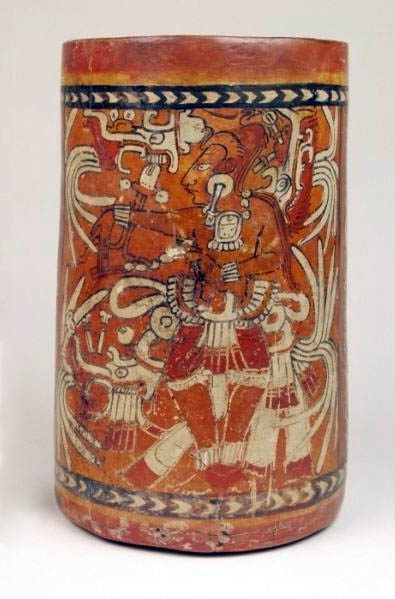
Maya Cylinder Vase
AD 600 – 900
This vessel depicts the young Maize God wearing a lavish feather headdress.
William P Palmer, III Collection
HM1183

